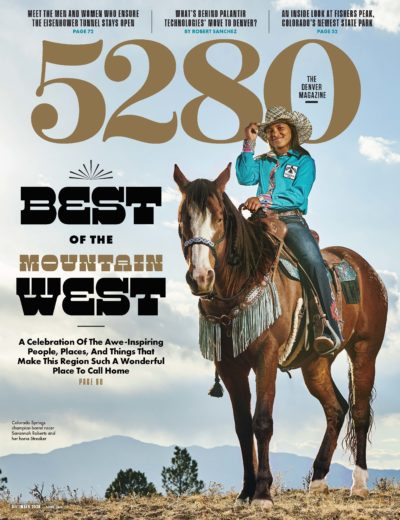The Local newsletter is your free, daily guide to life in Colorado. For locals, by locals.
Q: I’m all for preventing COVID-19 outbreaks, but resorts’ temporary reservation systems are messing with my powder days. I think taking my snowboard into the backcountry is the answer, but can I avoid lugging it up a mountain?
A: For years, snowboarders had to carry their boards and use snowshoes to explore the backcountry. Then splitboards showed up in the ’90s. They’re basically boards you can split into free-heel skis, a style in which your heel isn’t secured to the ski, making skinning up mountains easier. We advise buying one that’s three to five centimeters longer than your usual board. That extra length helps you stay on top of powdery backcountry snow, even with the extra weight from your avalanche safety gear—which you absolutely need, along with training from a group like the American Institute for Avalanche Research and Education. Most people recommend that you’re proficient on blues and blacks before entering the backcountry and that you’re comfortable with deep snow. If you’re used to riding groomers, then, to quote South Park, “You’re gonna have a bad time.” Oh, and when you’re hiking up an incline, lean back, not forward. It keeps your skins in contact with the ground, giving you more purchase.
—Leo Tsuo, owner of Weston, a ski, snowboard, and splitboard manufacturer in Minturn
Q: How will this year’s wildfires impact winter adventuring? (Please say not at all….)
A: Unfortunately, an unhealthy forest hurts everybody. High-severity fire—that CNN footage of 100-foot flames—is so hot that it can cook and damage the soil, hindering water absorption. Instead, water flows downhill, and when it finds a drainage point it can quickly erode the land, causing boulders to shift. The damage from the Grizzly Creek Fire may result in rocks cascading down on the nearby section of I-70, causing travel problems for people taking that road to go skiing. In addition, the U.S. Forest Service frequently closes burned acres to all recreation to help stabilize the ecosystem and keep people safe from burned trees. The Cameron Peak Fire introduced severe fire to more than 100,000 acres, including 50 percent of the Comanche Peak Wilderness area. That damage prevents anyone from cross-country skiing or snowshoeing there.
—Dave Lasky, director of fire management at the Forest Stewards Guild
Q: How do I keep my down coat from getting lumpier than mashed potatoes after a wash?
A: Down is made up of a protein similar to our hair. Regular detergent, like Tide, is too harsh and breaks those proteins down, making the down brittle, flat, and less insulating. Instead, use a detergent formulated for down. Woolite is good, and Allied’s down wash doesn’t use palm oil, a surfactant that damages those proteins. Make sure you dry your down products thoroughly, too. It takes much longer than you’d expect. I recommend running your garment through the dryer three or four times on low heat, and maybe throw a few tennis balls in there to beat the down so it doesn’t clump up.
—Matthew Betcher, creative director at Allied Feather & Down









